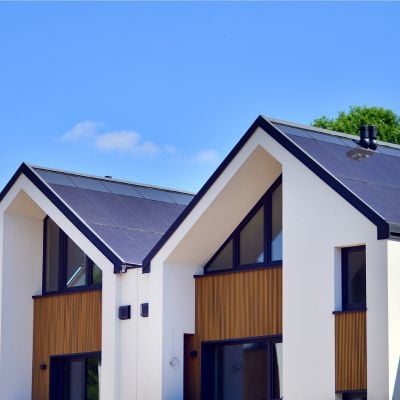Better than real estate
Stephan attributes much of his success to the fact that he started buying real estate at the right time. He purchased his first property in 2012 in Southern California’s San Bernardino for just $59,500 and paid in cash. By his estimate, the unit is now worth roughly $400,000 and delivers $1,500 in monthly rental income.
Other properties added to his portfolio at the time have had a similarly impressive run. However, the rising cost of homes and surge in mortgage rates in recent years has changed the landscape dramatically.
From the end of 2020 to the end of 2024, the median U.S. home price surged by nearly 24%, according to the Federal Reserve. Over the same period, the average fixed rate for a 30-year mortgage climbed from roughly 2.7% to 6.95%, according to the Fed.
The significantly higher costs of borrowing money and purchasing property has changed the dynamic for real estate investors.
“For me, I just haven’t seen many opportunities after 2020,” Stephan admits.
“I’m only able to run a profitable rental business because a lot of these properties were bought at a fairly low price almost a decade ago. Financed with really cheap debt locked in for 30 years. At today’s prices, none of this would be feasible. Nothing would cash flow.”
In fact, investing in real estate is so expensive right now that he believes passively investing in the stock market is easier and more lucrative.
“I’m much happier just throwing it all in an index fund and letting it do the heavy lifting for me,” he claims.
The S&P 500 is up over 60% since January 2021, a compounded annual growth rate of more than 13% over four years. Investing in a fund that passively tracks the S&P 500 is much easier than taking the time to find a new property, complete the purchase, possibly renovate, find tenants and pay for monthly maintenance.
If you’re looking to adopt this passive investing approach too, here’s a few options.
Invest in real estate without the headache of being a landlord
Imagine owning a portfolio of thousands of well-managed single family rentals or a collection of cutting-edge industrial warehouses. You can now gain access to a $1B portfolio of income-producing real estate assets designed to deliver long-term growth from the comforts of your couch.
The best part? You don’t have to be a millionaire and can start investing in minutes.
Learn MoreThe best passive investment funds
Investing in the S&P 500 via a low-cost fund like the SPDR S&P 500 ETF Trust (SPY) is perhaps the most popular form of passive investing. The fund currently has $628 billion in assets under management, making it one of the largest in the industry.
However, if you’re looking for passive income you could consider a dividend fund like the ProShares S&P 500 Dividend Aristocrats ETF (NOBL). This fund only tracks stocks in the index that have consistently raised dividends for at least 25 years and it currently offers a dividend yield of 2.46%.
If you’re looking for a tech-heavy strategy, the Invesco NASDAQ 100 ETF (QQQM) could be worth considering. Over the past year, this fund delivered roughly 20% in returns.
A combination of any of these funds could give you exposure to corporate America’s phenomenal growth that has outpaced real estate gains in recent years.
The richest 1% use an advisor. Do you?
Wealthy people know that having money is not the same as being good with money. Advisor.com can help you shape your financial future and connect with expert guidance . A trusted advisor helps you make smart choices about investments, retirement savings, and tax planning.
Try it now








